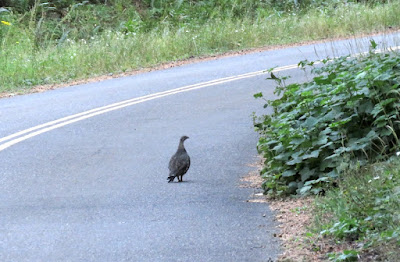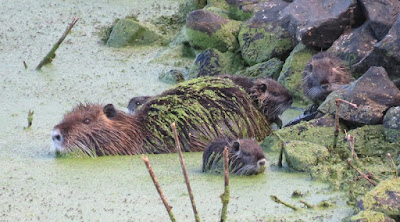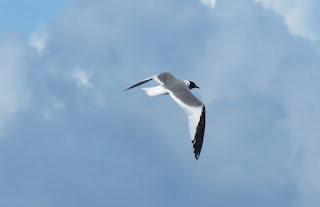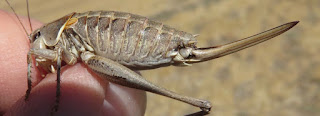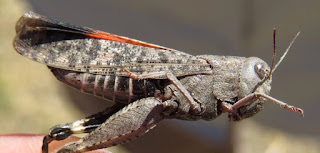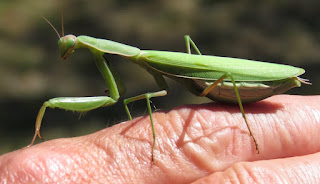Right after
my Oregon tour I was treated to a blissful week of birding in a totally new
location for me, Monhegan Island, Maine by my friends Beth McCollough and Will
Russell.
WINGS has
long offered a delightful week-long tour here during the peak of fall
migration, and Will timed our visit to coincide with the tour led by Derek
Lovitch, and he rented what’s known to everyone here as the Red House – 3
bedrooms, 1 1/2 bathrooms, living room, full kitchen, and a mud room – for
ourselves and Derek (while the WINGS participants stayed in the inn a very
short walk away).
We each
walked around the island a few hours each day, seeing what new migrants were
coming through, and enjoying the scenery and socializing with the many birders
there to do the same thing. Roads give access to the inhabited southwestern
corner of the island, while trails crisscross throughout and circumnavigate the
perimeter.
Double-crested
Cormorant and Common Eider were common on the shorelines.
We
encountered lots of migrant birds, but I didn’t get photos of many. We saw
anywhere from one to nearly a dozen Merlins each day.
Blue Jays
were actually migratory here – we could see flocks of them flying around the
island, thinking about heading over the water back to the mainland, about 10
miles away.
There were
some days with obvious waves of Red-breasted Nuthatches.
Yellow-bellied
Flycatcher was scarce; I think I saw just two.
Black-billed
Cuckoo is pretty rare here, so lots of birders gathered to see this one.
Yellow-crowned
Night-Heron used to be extremely rare anywhere in Maine, but now a few show up
every year, and this week there were at least two on the island.
Monhegan
Island is the best place in Maine to see a few western migrants, such as Lark
Sparrow and Clay-colored Sparrow. Here are both together, along with a Chipping Sparrow in the foreground.
Dickcissel is
also pretty rare in Maine, but quite regular on the island. I had scattered
some seed by our house attracted at least three and several Purple Finches.
Of course, I
took photos of all sorts ot things on my daily hikes. This is the slime mold Fuligo septica, along one of the forest
trails.
The forested part of the island is lovely.
Lycaena hyllus, Bronze Copper
Melanoplus femurrubrum, Red-legged
Grasshopper
Sympetrum obtrusum, White-faced
Meadowhawk
Vespula maculifrons, Eastern
Yellowjacket
Thamnophis sirtalis, Common Garter Snake
Viburnum nudum, Possumhaw
Minke Whale
Beth and I
also had fun every day in the kitchen. These next three photos are from her:
My rolling
out pie crust using a wine bottle. (The kitchen wasn’t totally complete.) The
apples were from a feral tree in the yard, and the pie was out of this world.
Pão de
Queijo – a Brazilian breakfast bread which I made with povilho azedo I brought
from Brazil.
Pizza night!
Here are Beth
and I the day we left.































